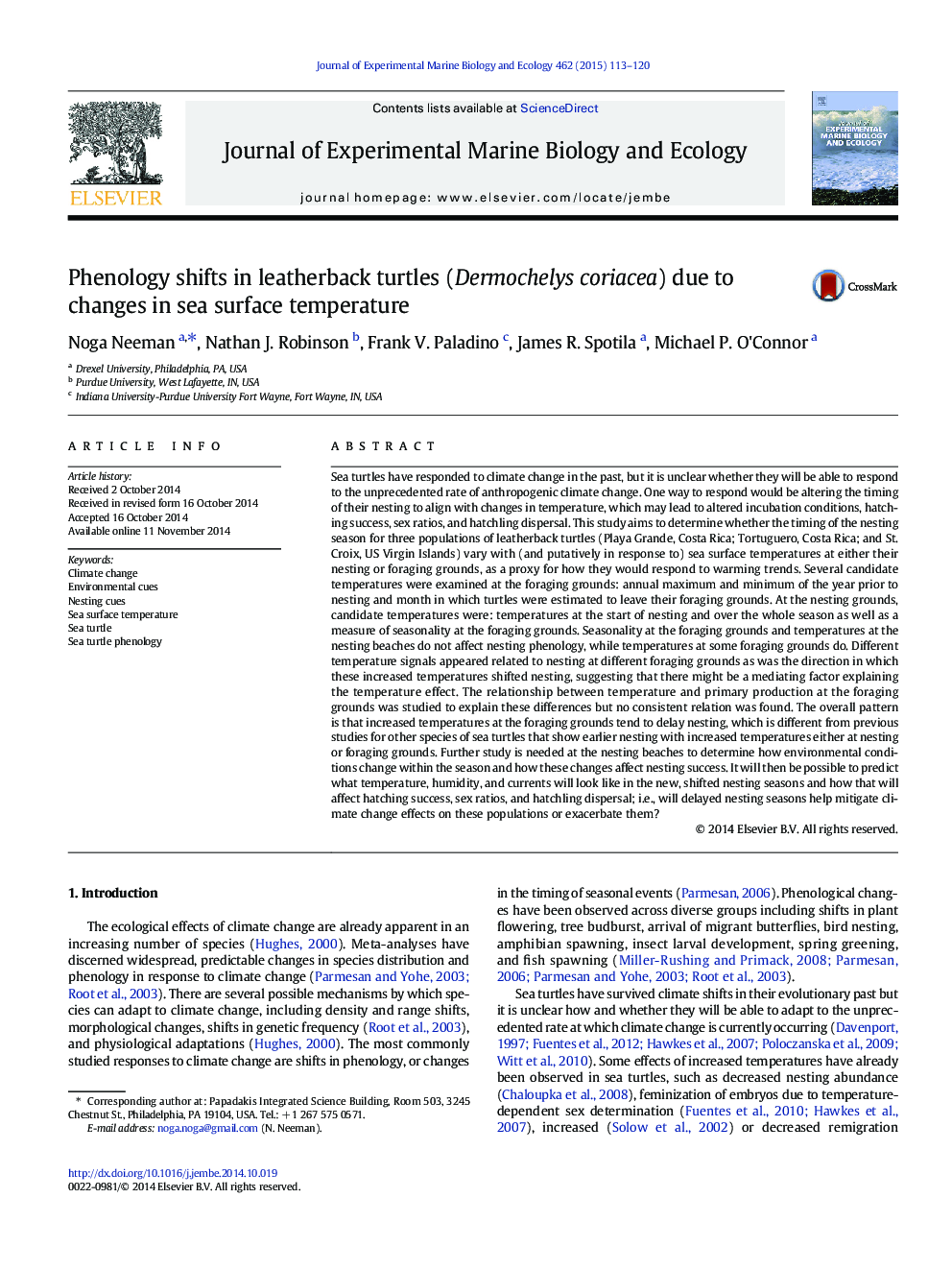| کد مقاله | کد نشریه | سال انتشار | مقاله انگلیسی | نسخه تمام متن |
|---|---|---|---|---|
| 4395446 | 1618413 | 2015 | 8 صفحه PDF | دانلود رایگان |

• Local temperatures do not alter nesting dates, but foraging ground temperatures do.
• Potential cues include annual maximum, minimum and migration month temperature.
• Different temperature cues are important at different foraging grounds.
• Changes in temperature may lead turtles to nest later or earlier.
• This diversity of temperature effects is not explained by net primary production.
Sea turtles have responded to climate change in the past, but it is unclear whether they will be able to respond to the unprecedented rate of anthropogenic climate change. One way to respond would be altering the timing of their nesting to align with changes in temperature, which may lead to altered incubation conditions, hatching success, sex ratios, and hatchling dispersal. This study aims to determine whether the timing of the nesting season for three populations of leatherback turtles (Playa Grande, Costa Rica; Tortuguero, Costa Rica; and St. Croix, US Virgin Islands) vary with (and putatively in response to) sea surface temperatures at either their nesting or foraging grounds, as a proxy for how they would respond to warming trends. Several candidate temperatures were examined at the foraging grounds: annual maximum and minimum of the year prior to nesting and month in which turtles were estimated to leave their foraging grounds. At the nesting grounds, candidate temperatures were: temperatures at the start of nesting and over the whole season as well as a measure of seasonality at the foraging grounds. Seasonality at the foraging grounds and temperatures at the nesting beaches do not affect nesting phenology, while temperatures at some foraging grounds do. Different temperature signals appeared related to nesting at different foraging grounds as was the direction in which these increased temperatures shifted nesting, suggesting that there might be a mediating factor explaining the temperature effect. The relationship between temperature and primary production at the foraging grounds was studied to explain these differences but no consistent relation was found. The overall pattern is that increased temperatures at the foraging grounds tend to delay nesting, which is different from previous studies for other species of sea turtles that show earlier nesting with increased temperatures either at nesting or foraging grounds. Further study is needed at the nesting beaches to determine how environmental conditions change within the season and how these changes affect nesting success. It will then be possible to predict what temperature, humidity, and currents will look like in the new, shifted nesting seasons and how that will affect hatching success, sex ratios, and hatchling dispersal; i.e., will delayed nesting seasons help mitigate climate change effects on these populations or exacerbate them?
Journal: Journal of Experimental Marine Biology and Ecology - Volume 462, January 2015, Pages 113–120